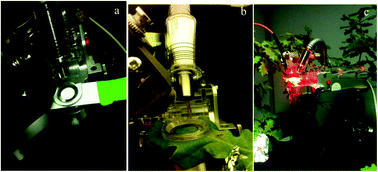Potential use of the PRI and active fluorescence for the diagnosis of the physiological state of plants under ozone exposure and high atmospheric vapor pressure deficit
Abstract
Assessing photosynthesis rates with remote sensing is important for tracking the physiological state of plants. The photochemical reflectance index (PRI) is a good estimator of short-term light-use efficiency (LUE) at the leaf scale but its responses to environmental factors are poorly understood. In this study, we assessed changes in the responses of the PRI to ozone exposure and to an increase in atmospheric drought (separately and combined) in oak (Quercus robur) and holm oak (Quercus ilex) that were planted in climatic cells under controlled conditions. The aim was to evaluate the ability of the PRI as a relevant indicator to assess the impact of abiotic factors on photosynthesis. Leaf-scale measurements of biochemical, physiological and spectral properties, including the PRI in dim light on dark-adapted leaves (PRI0), kinetics of PRI responses to PAR variations (photosynthetically active radiation), and leaf chlorophyll fluorescence parameters were performed. The results show that PRI0 is a good proxy of the leaf chlorophyll content, and is correlated to chlorophyll fluorescence parameters on dark adapted leaves (Fo, Fm). The correction of the PRI from the leaf chlorophyll content variations (PRIc) significantly improves correlations between the PRI and NPQ (non-photochemical quenching). The variability of PARsat (estimated PAR value at PRI saturation using PRI vs. PAR relationships) depends on ozone exposure and on the increase in atmospheric vapor pressure deficit. For Quercus robur, results highlight that PARsat is linked to abiotic stress indicating that the PRI may be used as a relevant indicator of abiotic factors limiting the photosynthesis. Quercus ilex did not show significant variability in PRI0 and PARsat, which suggest that it is a more drought resistant species than Q. robur.



 Please wait while we load your content...
Please wait while we load your content...